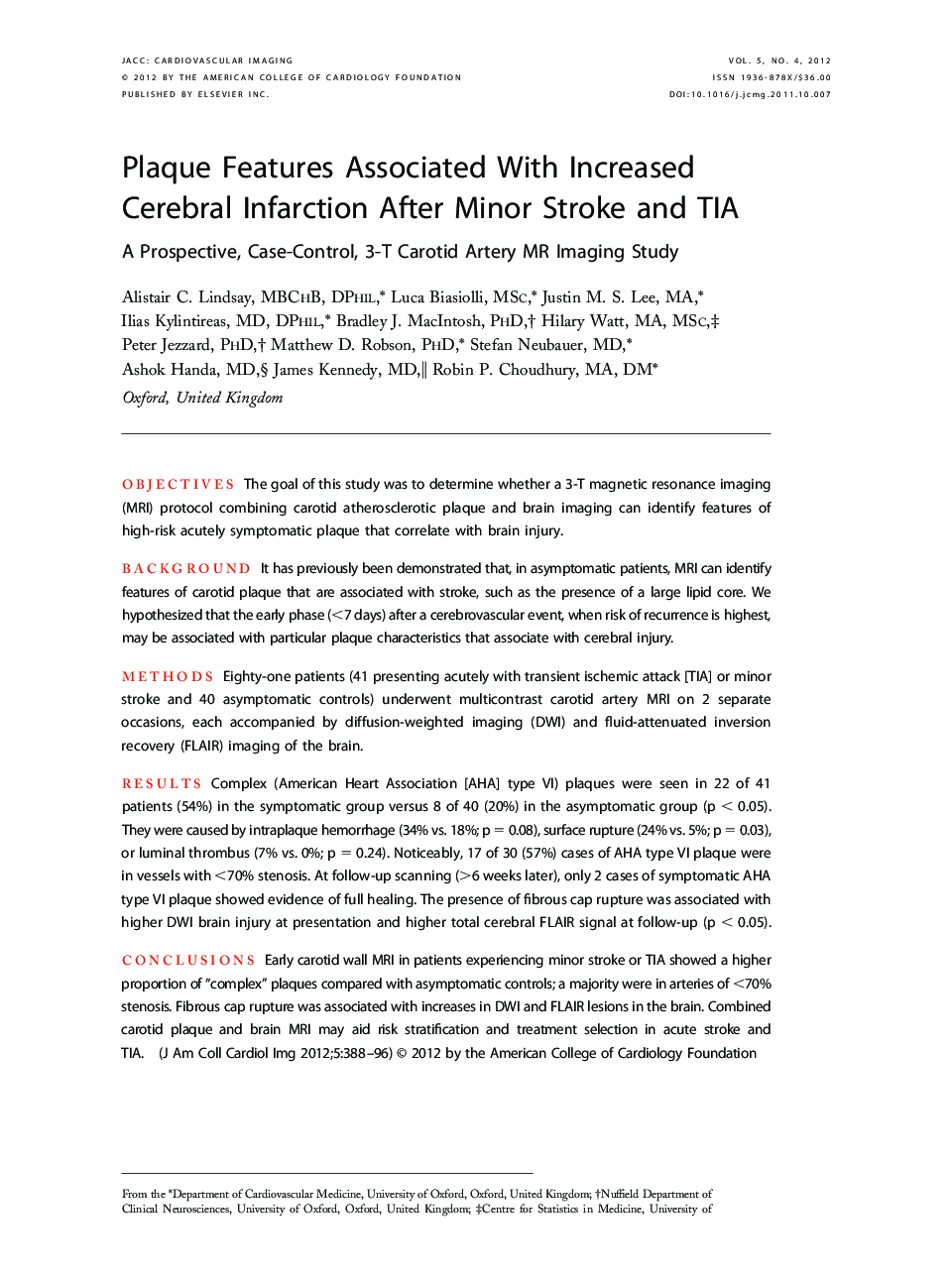| Article ID | Journal | Published Year | Pages | File Type |
|---|---|---|---|---|
| 2938663 | JACC: Cardiovascular Imaging | 2012 | 9 Pages |
ObjectivesThe goal of this study was to determine whether a 3-T magnetic resonance imaging (MRI) protocol combining carotid atherosclerotic plaque and brain imaging can identify features of high-risk acutely symptomatic plaque that correlate with brain injury.BackgroundIt has previously been demonstrated that, in asymptomatic patients, MRI can identify features of carotid plaque that are associated with stroke, such as the presence of a large lipid core. We hypothesized that the early phase (<7 days) after a cerebrovascular event, when risk of recurrence is highest, may be associated with particular plaque characteristics that associate with cerebral injury.MethodsEighty-one patients (41 presenting acutely with transient ischemic attack [TIA] or minor stroke and 40 asymptomatic controls) underwent multicontrast carotid artery MRI on 2 separate occasions, each accompanied by diffusion-weighted imaging (DWI) and fluid-attenuated inversion recovery (FLAIR) imaging of the brain.ResultsComplex (American Heart Association [AHA] type VI) plaques were seen in 22 of 41 patients (54%) in the symptomatic group versus 8 of 40 (20%) in the asymptomatic group (p < 0.05). They were caused by intraplaque hemorrhage (34% vs. 18%; p = 0.08), surface rupture (24% vs. 5%; p = 0.03), or luminal thrombus (7% vs. 0%; p = 0.24). Noticeably, 17 of 30 (57%) cases of AHA type VI plaque were in vessels with <70% stenosis. At follow-up scanning (>6 weeks later), only 2 cases of symptomatic AHA type VI plaque showed evidence of full healing. The presence of fibrous cap rupture was associated with higher DWI brain injury at presentation and higher total cerebral FLAIR signal at follow-up (p < 0.05).ConclusionsEarly carotid wall MRI in patients experiencing minor stroke or TIA showed a higher proportion of “complex” plaques compared with asymptomatic controls; a majority were in arteries of <70% stenosis. Fibrous cap rupture was associated with increases in DWI and FLAIR lesions in the brain. Combined carotid plaque and brain MRI may aid risk stratification and treatment selection in acute stroke and TIA.
